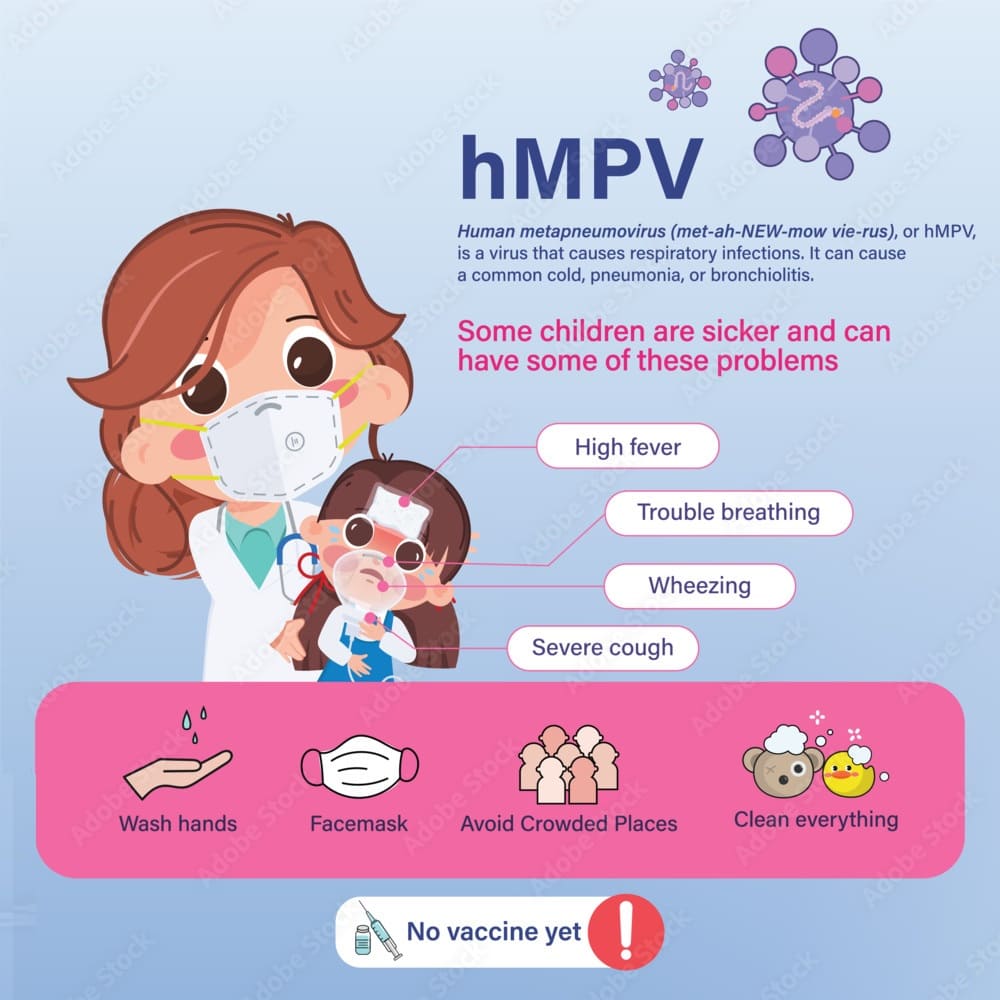In recent months, news about a new virus, Human Metapneumovirus (HMPV), affecting people in China has sparked global attention. As the world continues to navigate the aftermath of COVID-19, understanding emerging viruses and their potential impact is crucial. So, what exactly is HMPV, and why is it making headlines?
What is HMPV?
Human Metapneumovirus, commonly referred to as HMPV, is a respiratory virus first identified in 2001 by Dutch researchers. Despite its relatively recent discovery, the virus has likely been circulating among humans for decades. HMPV is part of the Paramyxoviridae family, which also includes other respiratory viruses like the respiratory syncytial virus (RSV).

How Does HMPV Spread?
HMPV spreads primarily through respiratory droplets, similar to the common cold or flu. Close contact with an infected person, touching contaminated surfaces, or exposure to respiratory secretions can result in transmission. This makes schools, crowded places, and healthcare settings potential hotspots for its spread.
Symptoms of HMPV Infection
The symptoms of HMPV can range from mild to severe, depending on the individual’s age, immune system, and underlying health conditions. Common symptoms include:
- Fever
- Cough
- Nasal congestion
- Shortness of breath
- Wheezing
- Sore throat
In severe cases, especially in infants, elderly individuals, and those with weakened immune systems, HMPV can lead to bronchiolitis, pneumonia, or even acute respiratory distress.
Why is HMPV a Concern in China?
Recent reports from China suggest a significant uptick in HMPV cases. Experts are closely monitoring the situation to determine if this is part of a regular seasonal outbreak or if a new strain with increased transmissibility or severity has emerged. With the country’s dense population and interconnected cities, the virus’s spread could potentially overwhelm healthcare systems if not adequately managed.
How Can You Protect Yourself?
Preventing the spread of HMPV involves adopting general respiratory hygiene practices. Here are some tips to stay safe:
- Wash Your Hands Frequently: Use soap and water or alcohol-based hand sanitizers.
- Wear Masks: In crowded or high-risk areas, wearing a mask can reduce exposure.
- Avoid Close Contact: Limit interactions with sick individuals, especially if they show respiratory symptoms.
- Disinfect Surfaces: Regularly clean commonly touched surfaces like door handles, phones, and tables.
- Stay Home When Sick: If you experience symptoms, avoid public places and seek medical advice.
What’s Next?
The scientific community is actively studying HMPV to better understand its transmission, clinical presentation, and potential treatments. While there is currently no specific antiviral treatment for HMPV, supportive care—such as hydration, oxygen therapy, and fever management—can help manage symptoms.
Currently, there is no specific vaccine available for Human Metapneumovirus (HMPV). Efforts to develop a vaccine are ongoing, but HMPV has remained a challenging target due to the complexity of the virus and its similarities to other respiratory viruses, like RSV.
Why Is There No HMPV Vaccine Yet?
- Complexity of the Virus: HMPV shares characteristics with other respiratory viruses, making vaccine development technically challenging.
- Lack of Awareness: Despite its widespread prevalence, HMPV has not received the same attention as other viruses like influenza or COVID-19.
- Focus on High-Risk Groups: Efforts to develop vaccines often prioritize severe or widespread diseases that significantly impact healthcare systems.
Current Management
While vaccines are not yet available, supportive treatments, such as hydration, oxygen therapy, and symptom management, are the primary methods for dealing with HMPV infections. Preventive measures, including hand hygiene, mask-wearing, and avoiding close contact with sick individuals, remain critical in reducing the spread.
Researchers are actively studying HMPV to develop targeted vaccines and antivirals, so there is hope for future advancements. Let me know if you’d like updates or further details!
Conclusion
While HMPV is not a new virus, its recent surge in cases in China serves as a reminder of the importance of vigilance in monitoring and addressing emerging health threats. Staying informed and practicing preventive measures are key to safeguarding public health. If you or someone you know experiences severe respiratory symptoms, seek medical attention promptly.
As we’ve learned from past experiences, understanding and preparing for potential outbreaks is crucial in mitigating their impact. Let’s work together to stay informed and safe.
